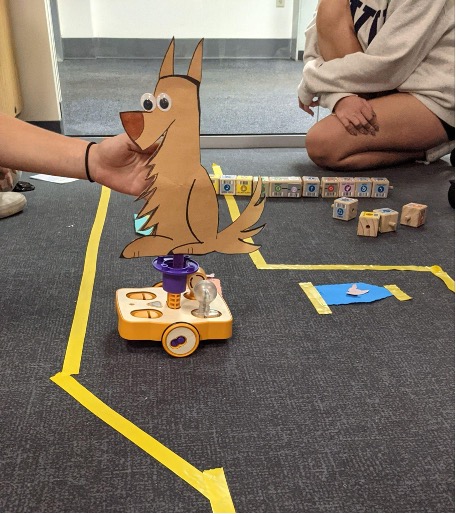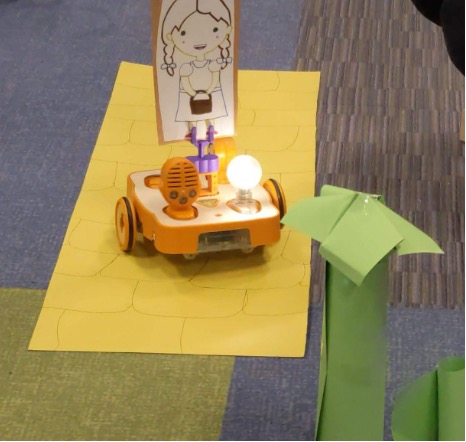Key points:
Instructing preservice educators at Roger Williams University in STEM education highlights the complex, multifaceted nature of effective STEM lesson planning. Teachers must align instructional content with state and national standards, prepare and organize materials, and thoughtfully structure collaborative learning experiences to ensure effective learning outcomes. While including the ISTE Standards for Students may initially seem like an additional burden, it can be seamlessly integrated into well-designed lessons.
For example, in my coursework, I introduce a collaborative, screen-free robotics activity that aligns with the ISTE Standards for Students. This activity emphasizes computational thinking and problem-solving, incorporating Common Core State Standards for English Language Arts and utilizing differentiation strategies to support diverse elementary learners.
I aim to demonstrate how technology integration can be purposeful and manageable by modeling this approach. Educators can adopt similar strategies to design interdisciplinary lessons that promote engagement, creativity, and foundational literacy and STEM competencies across grade levels.
The fairy tale obstacle course
To kick off the lesson, students are grouped into collaborative teams of three. Each team selects a well-known fairy tale or narrative as the basis for their work. Using a KIBO robot, an age-appropriate, screen-free platform for young learners, and simple makerspace materials (such as construction paper, tape, and craft supplies), students transform the robot into the protagonist of their chosen story. This creative process fosters imaginative thinking and engineering design as they construct a character-based model to bring their narrative elements to life.
Following the design phase, students construct an obstacle course representing key elements from their story, such as navigating through a forest, crossing a bridge, arriving at a house, or simulating travel through water. Students also explore relevant KIBO extensions, such as light sensors and the sound recording module. These features empower teams to enhance their robots’ actions with sound effects, character voices, or background music, deepening the storytelling experience while building additional technical skills.
In the programming phase, students collaborate to design a sequence of commands using KIBO’s tangible programming blocks. After arranging their code, they scan the sequence using the robot’s built-in barcode scanner to execute their program. Teams document their final code with a photograph before progressing to the next part of the activity.
In the second phase of the lesson, teams rotate and are assigned to another group’s obstacle course. Instead of receiving the original code, the new team is given written directions and hints left by the previous group. Using this guidance, they attempt to recreate the robot’s journey through the story-based course. This task encourages them to work together, communicate effectively, and share their ideas. Upon completing the task, they photograph their version of the code and compare it to the original, reflecting on differences in coding logic, problem-solving strategies, and story interpretation.
This lesson integrates computational thinking, engineering design, literacy standards, and collaborative learning, while fostering creativity, critical thinking, and effective communication.
ISTE Standard for Students 1.1 Empowered Learner
Students actively choose a fairy tale, design their robot, and document their coding journey, demonstrating ownership and agency in the learning process.
ISTE Standard for Students 1.4. Innovative Designer
The obstacle course creation process requires iterative problem-solving, engineering design, and creativity. Students use KIBO and makerspace materials to build imaginative narrative experiences.
ISTE Standard for Students 1.5. Computational Thinker
Students use KIBO’s tangible coding blocks to program sequences, apply logic, and debug as needed, practicing decomposition, sequencing, and algorithmic thinking.
ISTE Standard for Students 1.6. Creative Communicator
Through sound recordings and robot storytelling, students creatively communicate their chosen narrative and character. They also share their thinking through written directions left for peers.
Student Example: The Three Little Pigs

Grade Level: 3rd Grade
Robotics Platform: KIBO
Objective: Demonstrate understanding of story structure through engineering and programming.
Team Design: The robot was decorated to look like the wolfdrawn on cardboard. Students recorded: “I’ll huff, and I’ll puff, and I’ll blow your house down!”
- Straw House: A tunnel made from yellow yarn and paper straws.
- Stick House: A teepee of craft sticks that wobbles when bumped.
- Brick House: A firm structure made from LEGO bricks and duct tape.
Each house had a motion-triggered component (e.g., the straw house collapsed when the robot bumped into it).
Programming: The students coded the robot to:
- Travel through the first two houses, causing them to collapse
- Pause with a recorded sound of the wolf huffing and puffing, flashing a white light
- Reach the brick house and spin in frustration, flashing a red light
Rotation Challenge: The second group interpreted the movement and recorded messages, identifying the theme of resilience. Their code was different from the original code because they added a backup movement for the robot when the stick house tilted too soon. Their reflection centered on various interpretations of story pacing, coding sequence, and the importance of durable design.
Creating an Outline for Lessons that Explore ISTE Standards
For educators seeking innovative ways to integrate robotics into classroom instruction while aligning with the ISTE Standards for Students, the following planning framework, adapted from my work with preservice teachers, can offer valuable guidance.
- Identify the intended grade level and the specific ISTE Student Standards the lesson will address.
- Clearly articulate the subject area in which robotics will be integrated, whether it be science, literacy, mathematics, or another discipline.
- Select the robotics platform, such as KIBO, Code & Go Robot Mouse, or Ozobot, ensuring it is developmentally appropriate and aligned with the learning objectives.
The lesson activity should be described in detail, including a clear objective that aligns with the ISTE Standards, a list of required materials, and a step-by-step explanation of the procedure. This activity may be original or adapted from existing resources, but it should connect robotics with the academic content and aim to enhance students’ computational thinking, engineering design, and literacy skills. Additionally, identify any supplementary technology tools that will be used to support instruction, facilitate collaboration, or assess student learning.
Robotics-based activities can significantly enhance student engagement, promote hands-on learning, and cultivate 21st-century skills. By utilizing this framework, educators can design lessons that align with curriculum standards and reflect the ISTE vision of empowering students to thrive in a digital world.
This post is exclusively published on eduexpertisehub.com
Source link

